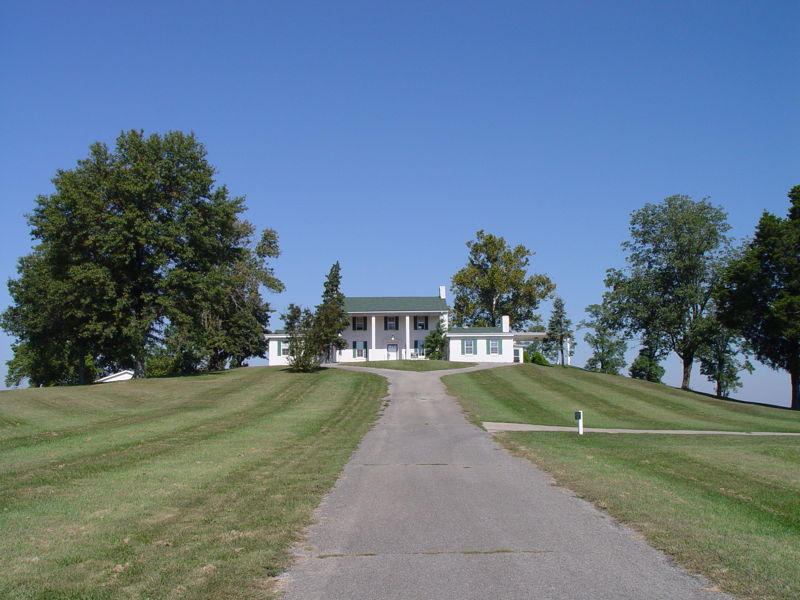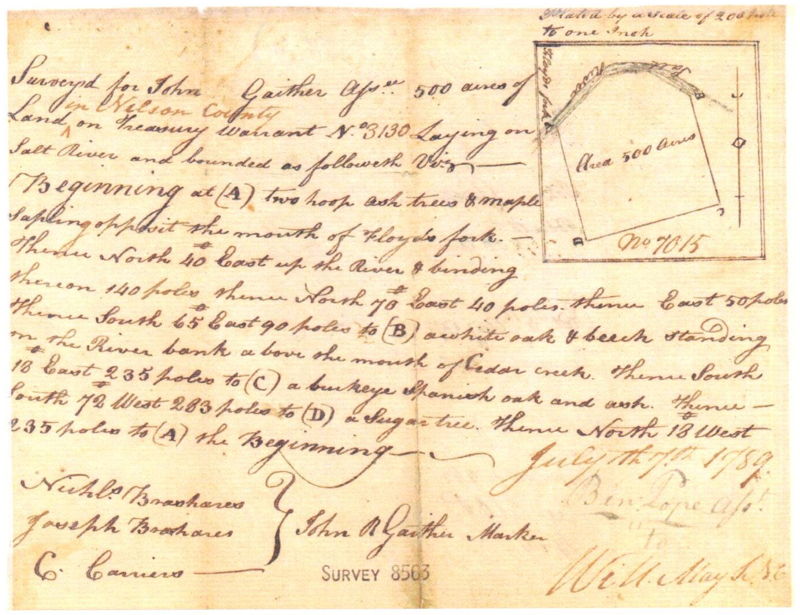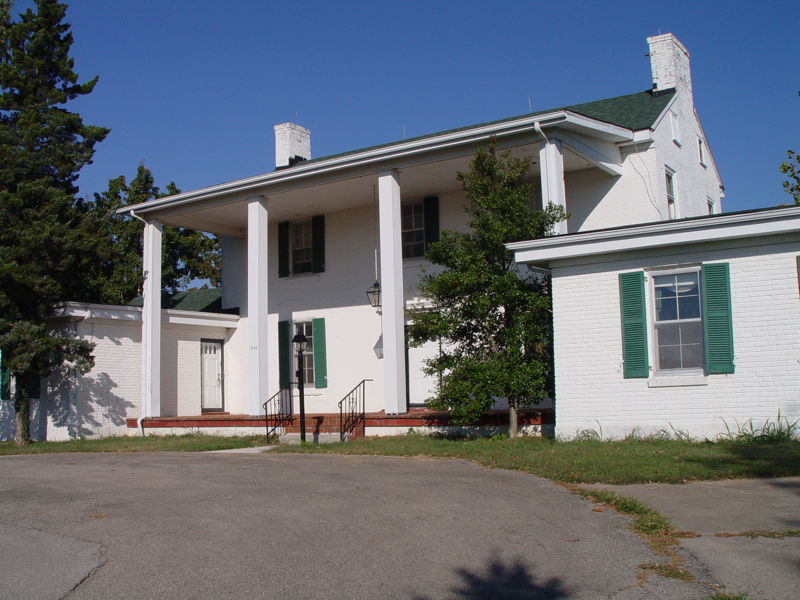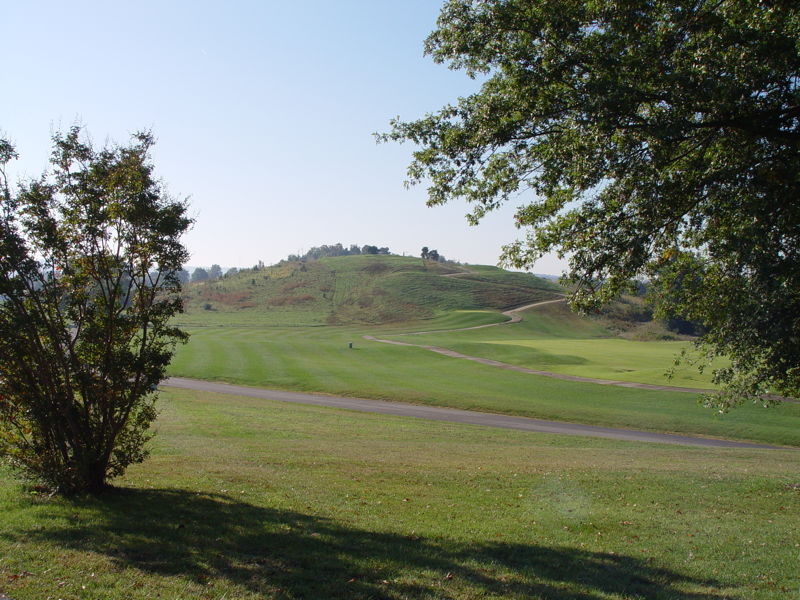
The following article by David Strange originally appeared in The Courier-Journal on 30 Mar 2014. It is archived here with additional information for your reading enjoyment.
There's a bend in the Salt River. It is one of many; hardly noticed by most; yet one that matters most to some.
I remember standing there several years ago, imagining how wonderful it would have been to be a boy with such a wondrous place of paths, water, and mysterious craggy cliffs just the right size to explore. An entire little private world to play and to create adventures.
Recently, I had the pleasure of seeing those memories through the eyes of one who lived it; whose memories of the farm, the river, and the home span over sixty-five years. I remember the place as the Plenge/Korfhage farm. Most people know it today as Heritage Hills.

I could see the memories in the eyes of Steve Plenge as he showed me around the old family home. The area has many houses and people today, but when Steve was a child, there were no neighbors with which to play. Steve's mom said that it was the loneliest place back then. She could look in any direction at night and not see a single light. But she never had a problem knowing where Steve was. She would just call the dog, and where he came from was where she would look for Steve. After chores, he might ride his bike back to the river, or just spend the day roaming the farm, exploring the woods, turning over rocks in search of "critters," or pretending to "fight Indians."
Steve wasn't far off in his childhood imaginings of "Indians" on the farm. No doubt in ancient times, Native Americans did indeed travel its river banks and hunt among its rolling hills. The first known pioneer settler on the land was John R. Gaither, who obtained a land patent from Virginia for 500 acres in 1789, a time of the very earliest settlers in the Bullitt County area. In fact, it was still part of Nelson County at the time.

A mill was built on a nearby creek, and then faded away with time. The millstone sat at the family home for years, and now is preserved by Ted and Gayle Korfhage. Joseph Simmons owned the land for a while; he now rests in the little Simmons Cemetery on top of a small hill on the farm. The cemetery dates back to at least 1819. The original road to the farm was Mooney Lane, where the one-room Glenn Ella School House is shown in an 1892 deed.
In the 1940's, Mr. Kinard, a wealthy insurance executive, owned part of the land. He placed cabins, with electricity and plumbing, near the river. Then ownership traded hands two or three times.
In the late 1940's, the families of Nan & Jack Plenge and Martie & "Boob" Korfhage were separately working a few small "truck" farms in the Shively area, and decided in 1948 to pool their resources to buy 414 acres of the original Gaither place.
The two families moved in together in the old farm house that probably dates back to at least 1839. The brick in the house was probably made on site, and the wood is hand-hewn. Over the years the families added to the original house, creating a unique sort of duplex, with the Plenges living on the right, with two children, and the Korfhages on left with four, and some common rooms between. Steve told me that the doors were never locked between sides; they were "all family," and treated each others' children as family.


It was difficult sometimes, and hard work. Every winter there was serious risk of the water well pump freezing, and every winter the family would stack bales of hay around the foundation to protect the pipes. Some of the family raised chickens, and Steve still remembers the smell of wet feathers. The families developed a successful dairy farm, but that meant taking care of hundreds of milk cows every day, morning and evening, no matter the weather.
Nevertheless there were many good times, and time for a boy to wander the fields in search of adventure, and the farm had the best hill for sledding in the whole county. Carol Korfhage Jones shared her memories of that great hill, and we have transcribed them on another page.
By the 1990's the family began to realize that the next generation of kids did not want to farm, and Bullitt County was rapidly becoming too urbanized for farm life. Steve's father had dreamed of developing a golf course, so the families started looking seriously into the possibilities of that, rather than the usual bulldozing and development that was going on with so many other farms in the area.
And so, Heritage Hills was born, with some great paths on the back-side near a bend in the Salt River, and the places of childhood adventures and grown-up memories.

Copyright 2014 by David Strange, Shepherdsville KY. All rights are reserved. No part of the content of this page may be included in any format in any place without the written permission of the copyright holder.
The Bullitt County History Museum, a service of the Bullitt County Genealogical Society, is located in the county courthouse at 300 South Buckman Street (Highway 61) in Shepherdsville, Kentucky. The museum, along with its research room, is open 10 a.m. to 4 p.m. Monday through Friday. Saturday appointments are available by calling 502-921-0161 during our regular weekday hours. Admission is free. The museum, as part of the Bullitt County Genealogical Society, is a 501(c)3 tax exempt organization and is classified as a 509(a)2 public charity. Contributions and bequests are deductible under section 2055, 2106, or 2522 of the Internal Revenue Code. Page last modified: 12 Sep 2024 . Page URL: bullittcountyhistory.org/memories/plenge_korfhage.html